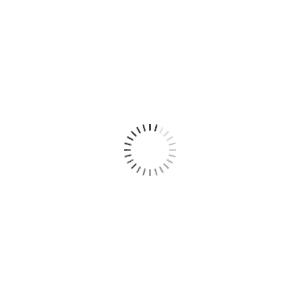FILTERS
L Band Low Pass Filter 1600 MHz 10kW peak
LPF-CL-1800-12500-1.30-NF-NFThis low pass filter offers a passband from DC to 1600 MHz with 0.5 dB of insertion losses and a high rejection of 35 dB at 2400 MHz. Fitted with N connectors, it offers a VSWR of 1.5:1 and a power handling of 1000 W average.L Band Low Pass Filter 1600 MHz 10kW peak
LPF-CL-1800-12500-1.30-NF-NFThis low pass filter offers a passband from DC to 1600 MHz with 0.5 dB of insertion losses and a high rejection of 35 dB at 2400 MHz. Fitted with N connectors, it offers a VSWR of 1.5:1 and a power handling of 1000 W average.This low pass filter offers a passband from DC to 1600 MHz with 0.5 dB of insertion losses and a high rejection of 35 dB at 2400 MHz.
Fitted with N connectors, it offers a VSWR of 1.5:1 and a power handling of 1000 W average.Low Pass Filter 1100 MHz 1kW
LPF-CL-1350-5000-1.15-SF-SFThis low pass filter offers a passband from DC to 1100 MHz with 0.5 dB of insertion losses and a high rejection of 65 dB at 2060 MHz. Fitted with SMA connectors, it offers a VSWR of 1.5:1 and a power handling of 100 W average.Low Pass Filter 1100 MHz 1kW
LPF-CL-1350-5000-1.15-SF-SFThis low pass filter offers a passband from DC to 1100 MHz with 0.5 dB of insertion losses and a high rejection of 65 dB at 2060 MHz. Fitted with SMA connectors, it offers a VSWR of 1.5:1 and a power handling of 100 W average.This low pass filter offers a passband from DC to 1100 MHz with 0.5 dB of insertion losses and a high rejection of 65 dB at 2060 MHz.
Fitted with SMA connectors, it offers a VSWR of 1.5:1 and a power handling of 100 W average.Low Pass Filter 4.9 MHz
LPF-LP-6.8-50-1.25-BF-BFThis low pass filter offers a passband from DC to 4,9 MHz with 0,5 dB of insertion losses and a high rejection of 100 dB at 18 MHz. Fitted with BNC connectors, it offers a VSWR of 1.5:1 and a power handling of 10 W average.Low Pass Filter 4.9 MHz
LPF-LP-6.8-50-1.25-BF-BFThis low pass filter offers a passband from DC to 4,9 MHz with 0,5 dB of insertion losses and a high rejection of 100 dB at 18 MHz. Fitted with BNC connectors, it offers a VSWR of 1.5:1 and a power handling of 10 W average.This low pass filter offers a passband from DC to 4,9 MHz with 0,5 dB of insertion losses and a high rejection of 100 dB at 18 MHz.
Fitted with BNC connectors, it offers a VSWR of 1.5:1 and a power handling of 10 W average.Low Pass Filter DC – 18 GHz
LPF-SS-18000-20000-30000-20-SM-SFThis low pass filter offers a passband from DC to 18000 MHz with 1.0 dB of insertion losses and a high rejection of 20 dB at 20000 MHz. Fitted with SMA connectors, it offers a VSWR of 1.7:1 and a power handling of 2 W average. Thanks to an high temperature stability substrate, its specifications stays very stable over it temperature operating range (-40 ° C to +85 ° C.).Low Pass Filter DC – 18 GHz
LPF-SS-18000-20000-30000-20-SM-SFThis low pass filter offers a passband from DC to 18000 MHz with 1.0 dB of insertion losses and a high rejection of 20 dB at 20000 MHz. Fitted with SMA connectors, it offers a VSWR of 1.7:1 and a power handling of 2 W average. Thanks to an high temperature stability substrate, its specifications stays very stable over it temperature operating range (-40 ° C to +85 ° C.).This low pass filter offers a passband from DC to 18000 MHz with 1.0 dB of insertion losses and a high rejection of 20 dB at 20000 MHz. Fitted with SMA connectors, it offers a VSWR of 1.7:1 and a power handling of 2 W average.
Thanks to an high temperature stability substrate, its specifications stays very stable over it temperature operating range (-40 ° C to +85 ° C.).
Low Pass Filter DC – 3 GHz
LPF-SS-3000-4600-12000-40-SF-SFThis low pass filter offers a passband from DC to 3000 MHz with 1.0 dB of insertion losses and a high rejection of 40 dB at 4600 MHz. Fitted with SMA connectors, it offers a VSWR of 1.5:1 and a power handling of 2 W average.Low Pass Filter DC – 3 GHz
LPF-SS-3000-4600-12000-40-SF-SFThis low pass filter offers a passband from DC to 3000 MHz with 1.0 dB of insertion losses and a high rejection of 40 dB at 4600 MHz. Fitted with SMA connectors, it offers a VSWR of 1.5:1 and a power handling of 2 W average.This low pass filter offers a passband from DC to 3000 MHz with 1.0 dB of insertion losses and a high rejection of 40 dB at 4600 MHz.
Fitted with SMA connectors, it offers a VSWR of 1.5:1 and a power handling of 2 W average.Low Pass Filter DC – 8 GHz
LPF-SS-8000-12000-24000-40-SF-SFThis low pass filter offers a passband from DC to 8000 MHz with 1.0 dB of insertion losses and a high rejection of 40 dB at 12000 MHz. Fitted with SMA connectors, it offers a VSWR of 1.5:1 and a power handling of 2 W average.Low Pass Filter DC – 8 GHz
LPF-SS-8000-12000-24000-40-SF-SFThis low pass filter offers a passband from DC to 8000 MHz with 1.0 dB of insertion losses and a high rejection of 40 dB at 12000 MHz. Fitted with SMA connectors, it offers a VSWR of 1.5:1 and a power handling of 2 W average.This low pass filter offers a passband from DC to 8000 MHz with 1.0 dB of insertion losses and a high rejection of 40 dB at 12000 MHz.
Fitted with SMA connectors, it offers a VSWR of 1.5:1 and a power handling of 2 W average.Low Pass Filter DC 1 GHz
LPF-SS-1000-1500-10000-40-SF-SFThis low pass filter offers a passband from DC to 1000 MHz with 1.0 dB of insertion losses and a high rejection of 40 dB at 1500 MHz. Fitted with SMA connectors, it offers a VSWR of 1.5:1 and a power handling of 2 W average.Low Pass Filter DC 1 GHz
LPF-SS-1000-1500-10000-40-SF-SFThis low pass filter offers a passband from DC to 1000 MHz with 1.0 dB of insertion losses and a high rejection of 40 dB at 1500 MHz. Fitted with SMA connectors, it offers a VSWR of 1.5:1 and a power handling of 2 W average.This low pass filter offers a passband from DC to 1000 MHz with 1.0 dB of insertion losses and a high rejection of 40 dB at 1500 MHz.
Fitted with SMA connectors, it offers a VSWR of 1.5:1 and a power handling of 2 W average.Waveguide WR112 Bandstop Filter – 7800 – 7880 MHz
BSF-WG-7800-7880-40-WR112-WR112-CUSTOM 001342This Waveguide Band Stop Filter allows you to sharply reject (40 dB) the 7800 - 7880 MHz frequency range while avoiding to degrade your signal from 7750 to 7765 MHz and from 7900 to 8340 MHz. Indeed it show very little insertion losses (0.4 dB) and a vswr of 1.15:1 max.Waveguide WR112 Bandstop Filter – 7800 – 7880 MHz
BSF-WG-7800-7880-40-WR112-WR112-CUSTOM 001342This Waveguide Band Stop Filter allows you to sharply reject (40 dB) the 7800 - 7880 MHz frequency range while avoiding to degrade your signal from 7750 to 7765 MHz and from 7900 to 8340 MHz. Indeed it show very little insertion losses (0.4 dB) and a vswr of 1.15:1 max.This Waveguide Band Stop Filter allows you to sharply reject (40 dB) the 7800 – 7880 MHz frequency range while avoiding to degrade your signal from 7750 to 7765 MHz and from 7900 to 8340 MHz. Indeed it show very little insertion losses (0.4 dB) and a vswr of 1.15:1 max.
Waveguide WR34 Bandstop Filter – 29.7 – 29.9 GHz
BSF-WG-29700-29900-25-WR34-CUSTOM-800059This Waveguide Band Stop Filter allows you to sharply reject (25 dB) the 29700 - 29900 MHz frequency range while avoiding to degrade your signal from 27500 to 29500 MHz and from 30000 to 31000 MHz. Indeed it show very little insertion losses (1 dB) and a vswr of 1.5:1 max.Waveguide WR34 Bandstop Filter – 29.7 – 29.9 GHz
BSF-WG-29700-29900-25-WR34-CUSTOM-800059This Waveguide Band Stop Filter allows you to sharply reject (25 dB) the 29700 - 29900 MHz frequency range while avoiding to degrade your signal from 27500 to 29500 MHz and from 30000 to 31000 MHz. Indeed it show very little insertion losses (1 dB) and a vswr of 1.5:1 max.This Waveguide Band Stop Filter allows you to sharply reject (25 dB) the 29700 – 29900 MHz frequency range while avoiding to degrade your signal from 27500 to 29500 MHz and from 30000 to 31000 MHz. Indeed it show very little insertion losses (1 dB) and a vswr of 1.5:1 max.
Depending of bandwidth, we can choose among several technologies : cavity, slabline, printed circuits or lumped elements for the most commons.
Each technology has its qualities and defaults, compromises often have to be made, for example, upper band rejection of a bandpass filter will be limited due to harmonic effect, just like passband of highpass filter will not tend to infinite because of spurious inherent of elements of the structure.
A mechanical filter will have good insertion loss thanks to a high quality factor, but price will also be higher than a printed circuit filter. We have to take into consideration performances to avoid overqualified products, if a standard part can make the deal at a lower cost.
There is 4 main type of filters :
- Lowpass filters allows the signal to pass usually from DC to Fmax with a controlled VSWR and Insertion Losses. For higher frequencies than the defined rejection (or cutoff) frequency, the signal is attenuated by a value in dB. However please note that if an ideal Lowpass filter can reject frequency up to infity, in reality the rejection will weaken as the frequency goes up.
- Highpass filters stop the signal from DC to a defined frequency called rejection frequency. It then allows the signal to pass through ideally to infinity. In practice however, the signal is attenuated again after a certain frequency.
- Bandpass lets a signal through on a defined bandpass from Fmin to Fmax. The upper and lower rejection are also defined. Please note that in practice, the bandpass is repeating itself at around 3x Fmin to Fmax. However, Deti has designed solutions in order to push away the parasitic bandpass.
- Bandstop filters, also called notch filters create a rejected frequency band within the filter's frequency range. It is often used to get rid of a parasitic signal (telecom frequencies such as 4G or 5G for example) within your application frequency range. As for band pass filter, there is parasitic bandstop a around 3x the initial notch.

